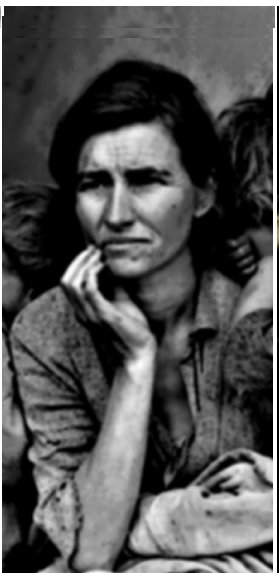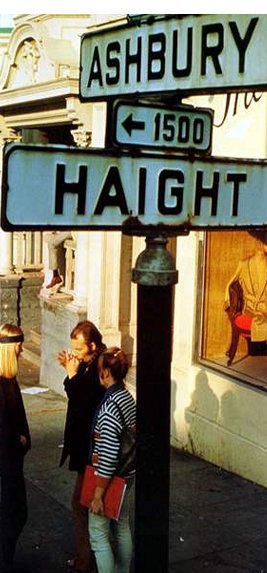
|Home| |Pre-American Settlement| |American Settlement--Civil War| |Late Nineteenth Century|
|Early Twentieth Century| |World War II and the Fifties| |Sixties--Present| |City Histories| |About|









 |
Proposition 209: Behind the Scenes Michael Chen
Affirmative action is a highly
controversial issue that refers to policies aimed at minority groups of a
society for the purpose of increasing representation in areas such as education
and employment. In Lydia Chavez¡¦s
book, The Color Bind: California¡¦s Battle to End Affirmative Action, she
addresses this issue in Chavez first discusses the side
that supports the end of affirmative action, introducing key players of the
California Civil Rights Initiative (CCRI) such as Glynn Custred,
Thomas Wood, Pete Wilson, and Wardell Anthony Connerly. Glynn
Custred, a teacher at Following this, Chavez introduces
the opposing side, which was based on three loosely organized groups: civil
rights leaders, women¡¦s rights leaders, and Democrats hoping to wrest control
from the Republicans. These people
had a difficult time with ¡§sound bites¡¨ used in the CCRI because the
initiative¡¦s wording never mentioned affirmative action. It ¡§sounded as if it had been written by
Martin Luther King, Jr. himself,¡¨ not to mention its name, California Civil
Rights Initiative, ¡§appropriated the ideals of Martin Luther King, Jr.¡¨ 5
Voters would not know that they would be voting to end affirmative action. Opposition faced more problems, as some
women would not join because they feared that their husbands and sons would
have hard times finding jobs if affirmative action continued. Northern and Southern Democrats could
not agree on a plan to combat the CCRI, either. They ended up splitting into two groups;
one supporting an alternative initiative strategy that preserves affirmative
action and another that would educate voters of the CCRI¡¦s
true, and encourages them to vote against it. Neither the opposition nor the supporters
were able to get their presidential candidate¡¦s full backing, and both were
plagued by funding complications. The opposition continued to face more
problems. The Northern Democrats¡¦
alternate initiative plan failed because it was interpreted as ¡§too clever;¡¨
instead of eradicating quotas, it ¡§would end education programs designed for
minorities ¡V programs the analyst interpreted as having quotas.¡¨ 6
The women of the opposition followed a new plan and tried to turn the issue of
affirmative action, which had been turning into a race issue, instead into a
gender issue. That way, their
support base would broaden. The
North and South then arrange a ¡§forced marriage¡¨ in attempts to increase
influence. However, problems still
arose. Members of the National
Organization for Women (NOW) and the Feminist Majority argue amongst each other
about funding issues. The ¡§sound
bites¡¨ were going to remain a problem.
The wording of Proposition 209 was taken to court on charges that it
would be misleading to voters; however the court ruled that the wording did not
have to be changed. Bill Clinton,
the Democratic presidential candidate, continued to make speeches that do not
clearly put him on either side of the issue by taking an ambiguous stance. He indicates that he supports
affirmative action but at the same time supports those against segregation. He proposes to mend the system, and his
approach attracts voters of both coalitions. Democrat unrest continued as black
members wanting more representation accused the feminists of racism because the
feminist leaders did not allow new members to higher seats of the Democratic
coalition. These accusations
combined with arguments that already existed between leading members led to the
Feminist Majority and NOW breaking off from the group. The Republicans gained
the upper hand because they had a better budget, which allowed for radio
advertisements stating that Proposition 209 ¡§ends discrimination,¡¨ which no one
would oppose. 7 The book¡¦s tone becomes hectic as
Election Day approaches.
Republicans begin facing more problems. They accidentally invite reporter Rick Orlov to one of their meetings. During that meeting, it had become
apparent that the affirmative action issue was instead seen as a way to help
Republicans win Congress and the presidency, and great measures were taken to
assure the passage of the proposition. Republicans then faced a greater problem
as David Duke, an ex-Klansman, publicly announced his support of the
proposition. This drove
away support; an ex-Klansman supporting an initiative banning discrimination
appeared paradoxical. Their
problems continued as their presidential and vice-presidential candidates
continued to take unclear stances on the issue. This was because of economic
conditions. Chavez thoroughly explained the arguments for
supporting and opposing affirmative action. Those who encouraged affirmative action
believed that the programs are needed to ¡§improve conditions of those excluded
from the American dream¡¨ for so long, to level the playing field for those
without the same educational and financial opportunities as others, and to increase
the diversity of places for example, a student body because of the reality of a
multicultural world.9
Those opposing affirmative action may have defended their stance by
saying that reverse discrimination, and any form of discrimination in general,
needs to be taken care of at an early stage so there will be no problems in the
future. Common ground must be found
or the diverse range of races will not be able to live together, and even those
that benefit from affirmative action plans may be insulted. Chavez concluded that despite the
majority support for affirmative action, Proposition 209 was still passed for
various reasons. The Republican
victory was a result of better leadership, greater campaign funding,
well-versed ¡§sound bites¡¨, and the constant dissent within in the Democratic
coalition. She mentions, however,
that the after effect proved favorable to the Democrats because their
presidential candidate Bill Clinton gets reelected and the Latino voting turn
out increased, gradually pushing power to the Democrats. Although it appeared as if the book only recounted
the story of Proposition 209 and objectively presented arguments of both sides
on defending their stance, Chavez indirectly calls for the change of the reform
of the initiative process, because "it is a process that desperately needs
reform."10 She revealed all sorts of schemes that went
undetected by the public eye as each side attempted to rally voters. The initiative process, with the
intentions of allowing the ordinary citizen to change the law, instead
"permits wealthy special interest groups to bypass the deliberative
process and change laws in their narrow interest"; mass amounts of money
are poured in with the sole purpose of getting an initiative on the ballot and
then more money was put in to campaign supporting or opposing it. She believes that ¡§anyone with a million
dollars to pay for the signatures necessary to put an initiative on the ballot
can attempt to enact laws or change a state constitution.¡¨11 Chavez
reveals the various crafty tactics that politicians used like the elusive
wording used in the CCRI campaign.
Although the initiative was basically about ending affirmative action
programs, it never specifically mentioned the word ¡§affirmative action¡¨ in its
articles. This was one of the many
intentional moves made by the anti-affirmative action organization, but they
were not the only ones to use deceitful tactics. Chavez also showed how the issue, and
issues in general, becomes less about actually resolving the issue itself but
rather about how politicians take advantage of it for their interests. She makes reference to Pat Buchanan who
¡§was genuinely opposed to affirmative action¡¨ and that for him, ¡§CCRI wasn¡¦t merely
a matter of convenience.¡¨ 12 This indicated that maybe only a few of
the anti-affirmative action members actually cared about the issue, instead of
treating it as a tool to gain political power. Civil Rights Journal¡¦s Frank H. Wu presents a
critical review of Chavez¡¦s book.
After giving a summary of the book, he believes that Chavez failed to
give some information about affirmative action that he considered necessary,
such as the ¡§complexities that underlie the seminal public policy issue¡¨ and
how she ¡§does not, unfortunately, offer even a sampling of the data that show
blacks and whites face differing life prospects, or review disputes over how to
respond to such facts.¡¨ He does, however, respond positively to
Chavez¡¦s discussion of ¡§aspects of Proposition 209 campaign that deserved more
attention than they were given in the daily news.¡¨ Despite being critical for
the majority of the review, he ends it favorably, stating that ¡§Chavez's book
is likely to become the standard history of this important ballot initiative.¡¨13
New York Times¡¦s Douglas A. Sylva also
reviewed and approved the book. He
believes that Chavez ¡§makes a strong case that ¡¥leaving central questions of
social policy up to a popular vote is nonsense.¡¦¡¨ His view of the books message
differed from Wu¡¦s because he believed that it was mainly about the ballot
initiative process, instead of the topic of affirmative action. He agrees with Chavez¡¦s view of
corruption in the process and how marketing skills play a key role in passing
measures. He commends the book,
describing it as ¡§fair and well-written.¡¨ 14 Lydia Chavez¡¦s neutral stance taken throughout the
book allowed her to reveal more information on both sides that would otherwise
not be possible if she were to support only one side. If she did, she would have to shape her
argument supporting that side in the book, which would leave out important
information about the opposing side.
Her overall tone made the events feel more tangible, because she
implements many quotes and testimonies from interviews and research. This made the book more interesting,
however sometimes the quotes she used seemed out of place for example, putting
quotes in such as ¡§¡¥What is he smoking?¡¦¡¨ and ¡§¡¥I was afraid he was going to
pick me up and beat the crap out of me¡¦¡¨. 15 Although these
particular quotes seemed out of context with the overall tone of the book, they
do not make the book any less interesting.
Overall the book offered great insight on a historical event without the
dull tone of a standard history textbook. Chavez realizes that the events that took place in 1. 2. 3. 4. 5. 6. 7. 8. 9. 10. 11. 12. 13. Wu, Frank. ¡§The Color Bind: 14. Sylva, 15. 16. 17. |